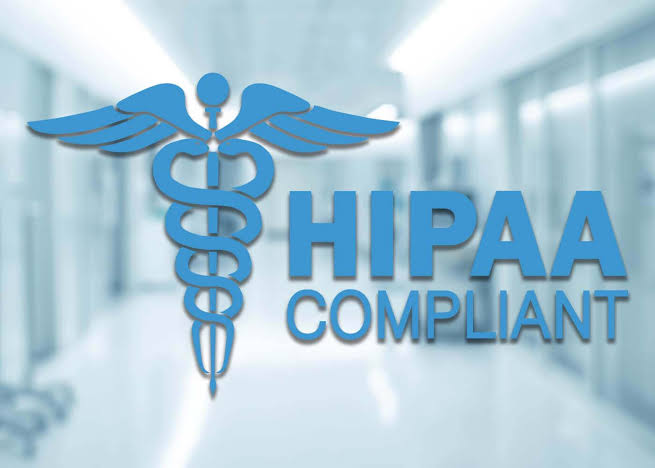In the healthcare industry, the need to communicate clearly, promptly, and securely with patients has never been more important. With sensitive medical information regularly exchanged via printed letters, appointment reminders, billing statements, and lab reports, safeguarding personal health information (PHI) becomes a critical responsibility for all healthcare providers. Enter HIPAA-compliant print and mail services—a vital solution ensuring not only seamless communication but also rigorous data security.
Why Security Matters in Healthcare Mailings
Every time a healthcare provider sends a letter containing PHI—such as test results, appointment confirmations, or payment statements—they must adhere to the Health Insurance Portability and Accountability Act (HIPAA). This federal regulation mandates how patient data is handled, shared, and protected. A single oversight in mailing processes can lead to data breaches, non-compliance penalties, and loss of patient trust.
HIPAA violations can result in fines ranging from hundreds to millions of dollars, depending on the severity and nature of the breach. With mailroom errors accounting for a significant portion of HIPAA violations, healthcare organizations must prioritize secure and compliant communication methods. That’s where the power of specialized print and mail solutions comes in.
The Role of HIPAA-Compliant Print and Mail Solutions
HIPAA-compliant print and mail solutions are designed specifically for the healthcare sector. These services ensure that all printed communications—whether they include billing details, treatment plans, or insurance updates—are handled with strict security measures in place.
These solutions cover the entire process, from data encryption during document creation to secure printing, sorting, and delivery. A HIPAA compliant print and mail service will implement access controls, audit trails, data encryption, and physical security safeguards to prevent unauthorized access or mishandling of PHI.
For example, a trusted provider like PostGrid offers full-service solutions that comply with all HIPAA guidelines. Their workflows are designed to minimize human error while ensuring data confidentiality every step of the way.
Key Features of a HIPAA-Compliant Mail Provider
When evaluating a HIPAA direct mail service, it’s important to understand the specific features that distinguish compliant providers from generic print-and-mail vendors. Look for the following characteristics:
1. Data Encryption
From the moment patient data is uploaded, it must be encrypted in transit and at rest. This encryption prevents unauthorized users from accessing sensitive content.
2. Secure Print Facilities
HIPAA-compliant providers operate in secure print environments with restricted access. These facilities are monitored 24/7, and access is granted only to authorized personnel.
3. Audit Trails
Every step of the mailing process must be documented. This audit trail ensures accountability and helps in case of an internal review or external audit.
4. Business Associate Agreement (BAA)
Any vendor handling PHI must sign a BAA, which holds them accountable to HIPAA standards. If a print and mail provider doesn’t offer a BAA, they are not truly HIPAA compliant.
5. Automated Workflow
Automation helps reduce the chance of human error—a leading cause of compliance breaches. A good direct mail service integrates with EHR/EMR systems and other healthcare platforms to streamline the mailing process.
Use Cases of HIPAA-Compliant Mailing in Healthcare
The need for compliant mailing stretches across many use cases in healthcare:
- Appointment Reminders: Ensuring that patients receive secure, discreet notifications about their upcoming visits.
- Test Results: Communicating lab outcomes through encrypted and sealed mailing processes.
- Billing Statements: Sending financial details safely, including co-pays, insurance coverage, and payment requests.
- Educational Materials: Mailing brochures or wellness information that includes PHI.
All of these documents must be mailed in a way that keeps patient information secure while maintaining professionalism and speed.
Advantages of Partnering with a HIPAA Direct Mail Service
Working with a specialized HIPAA direct mail service like PostGrid offers multiple benefits to healthcare organizations of all sizes:
1. Enhanced Security and Compliance
With tight controls and expert knowledge of HIPAA requirements, these services eliminate guesswork and reduce compliance risks.
2. Time and Cost Efficiency
Instead of managing in-house mailrooms—which require staff, equipment, and secure protocols—healthcare providers can outsource the entire mailing process. This not only saves costs but also speeds up turnaround time.
3. Improved Patient Experience
Secure and timely communications foster trust and reliability. Patients are more likely to engage when they feel their information is handled responsibly.
4. Scalability
Whether you’re a small clinic or a multi-location hospital system, compliant mail services can scale with your needs—handling thousands of letters without sacrificing quality or security.
Digital Meets Physical: Hybrid Mail for Healthcare
Many modern HIPAA-compliant solutions also support hybrid mail—a combination of digital input and physical output. Staff can generate letters digitally and send them directly to the print-and-mail service with a few clicks. The provider then takes over, ensuring secure printing, envelope stuffing, sealing, and mailing—all within a compliant framework.
This system reduces the burden on internal teams and ensures consistency in communication quality and timing. It’s especially useful for billing departments and patient outreach campaigns.
Reducing Human Error with Automation
One of the biggest advantages of outsourcing to a HIPAA-compliant provider is the automation of tasks that are prone to human error. Manual printing, envelope stuffing, and mailing often result in misdirected letters or visible PHI through envelope windows.
HIPAA-compliant systems use intelligent document composition and verification steps that match letters to the correct recipients, confirm contents, and ensure proper sealing. Automation provides a level of accuracy and security that’s hard to replicate manually.
Choosing the Right HIPAA-Compliant Partner
Selecting a reliable HIPAA-compliant provider is a strategic decision that can protect your organization from costly breaches and reputational damage. Here are some questions to ask potential vendors:
- Do you offer a signed Business Associate Agreement (BAA)?
- What certifications and audits does your company undergo?
- What encryption standards do you use?
- How do you ensure physical security in your print facilities?
- Can your system integrate with our EHR or CRM software?
- Do you offer real-time tracking and reporting?
A provider like PostGrid checks all these boxes while offering a seamless, end-to-end solution that integrates with your existing systems.
Final Thoughts
Healthcare organizations have a legal and ethical obligation to protect patient data. As communication needs increase, relying on HIPAA compliant print and mail solutions becomes not just a best practice—but a necessity. Whether you’re sending out patient statements, test results, or educational outreach, using a HIPAA direct mail service ensures that your communications are both efficient and secure.
By choosing a trusted partner like PostGrid, you can streamline operations, build patient trust, and stay fully compliant with HIPAA regulations—without sacrificing convenience or quality. In a world where data privacy is paramount, this kind of investment in secure communication isn’t just smart—it’s essential.










